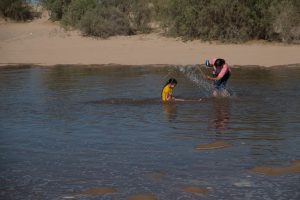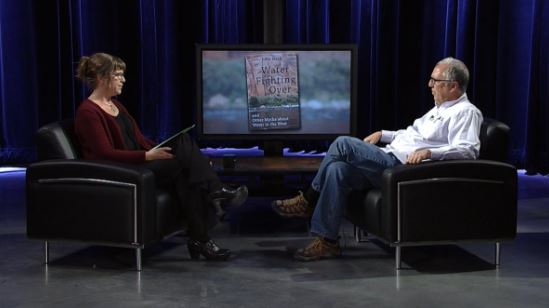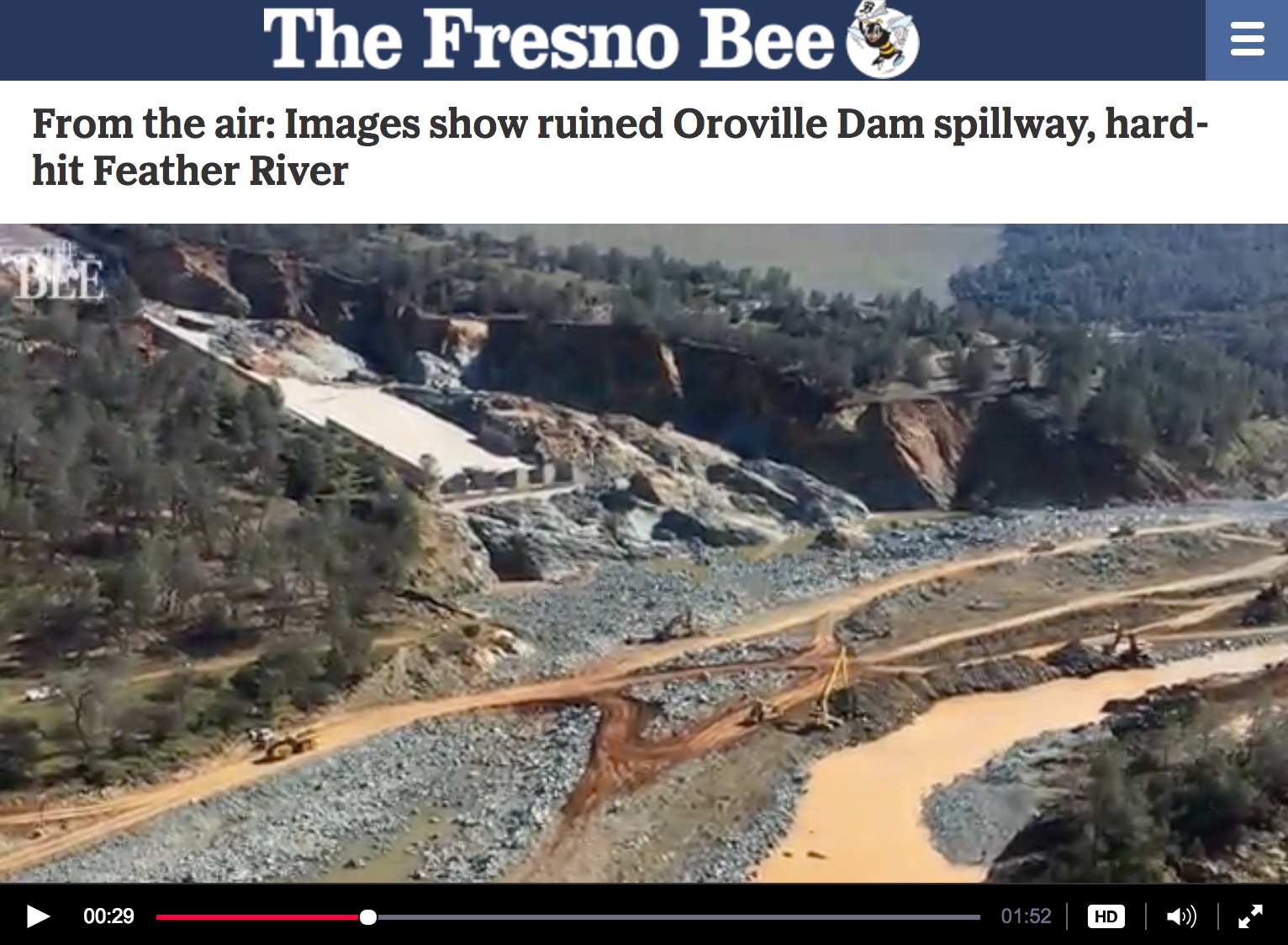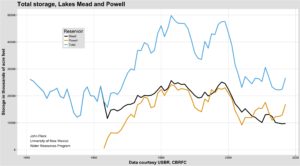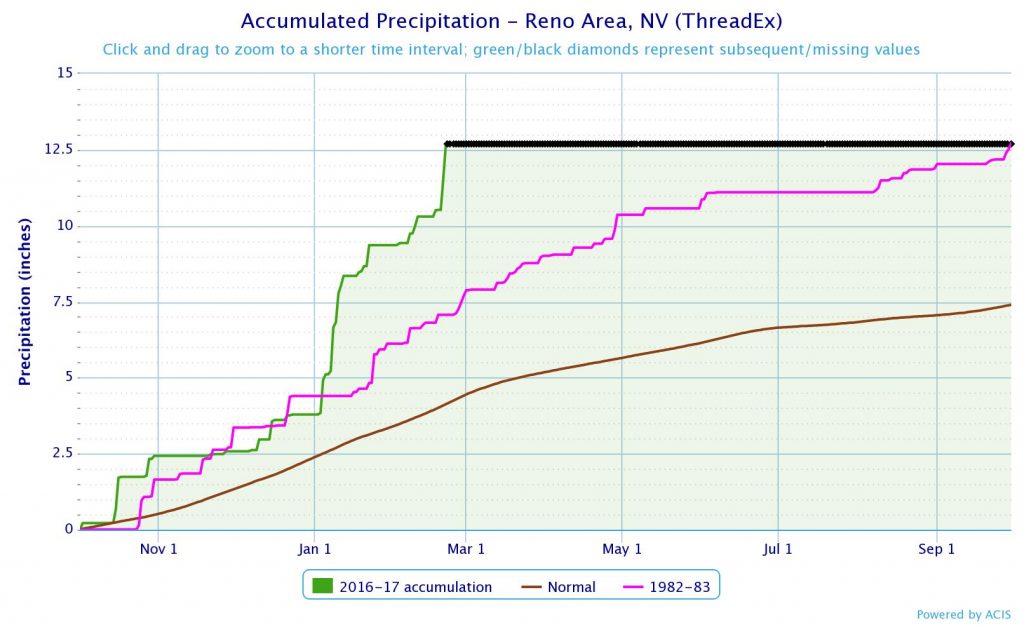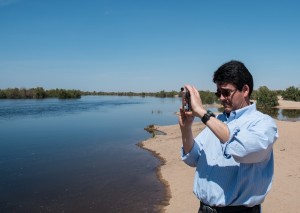I took a detour from the bike trail this morning to see water in the Albuquerque Main Canal, which brings irrigation water to Albuquerque’s strangely urbanized rural valley. There are 350 miles of canals threaded through the Middle Rio Grande Conservancy District’s Albuquerque Division, bringing water to something like 10,000 acres of land.
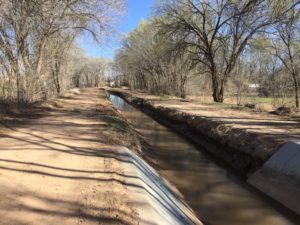
Albuquerque’s ditches are beginning to run
It was near the spot where the late Joe Trujillo, who oversaw this part of the irrigation network for the District, once described for me the joy of turning on the ditches every March. You can see the valley breathe in, he told me. “Running water,” he told me. “My favorite time of year.”
The nice modern concrete apron in the picture to the right funnels the water into a siphon that carries the canal beneath a six-lane highway. But the old dirt ditch to the north is more typical of irrigation here. The District diverts water from the Rio Grande at Angostura, 15 or 20 miles to the north, moving it through a complex network of canals that spiderweb the valley floor. It is a complicated system:
Most of the canals in the Division are directly descended from Acequias founded during Spanish rule in the 17th and 18th centuries. Plot size is generally small and there are literally thousands of turnouts served by many community ditches. Urbanization has further complicated the delivery system, with many ditches disappearing into pipe, reappearing, disappearing again, etc. Urbanization has also resulted in already small plots being further divided, and a preponderance of casual irrigators watering lawns, garden plots, etc.
They started diverting at Angostura March 1, and they’re moving 33 cubic feet per second into the irrigation system today.
Old water has its ghosts. Driving a ditch bank one spring a few years back, Trujillo pointed out a meandering line of trees spilling off to the west through a modern neighborhood, explaining that they traced the outlines of an old irrigation ditch.
I’m poking around the edges of a new project, still somewhat ill defined, but as I was leaving the house this morning for a bike ride, Lissa said, “Be sure to work on your new book!” I took her advice.
Depending on who I’m talking to, I describe it variously:
- the future of farming in the arid Southwest
- a consideration of these agricultural landscapes as nature
- what do we mean by “nature”?
- a dive into the exogenous forces that shape this landscape
- a change in Saudi groundwater pumping policy nudges the global market for hay
- the price of corn!
- the 1902 Newlands Reclamation Act
That last bullet is the most interesting to me right now, but the hardest to describe and the most difficult to “storyize”. I’ve been talking to farmers about how they decide which crops to plant. One, a friend who grows melons, told me to keep my eye on the price of corn, explaining that its rise and fall cascades through U.S. agriculture, affecting pretty much everything else.
According to the USDA, U.S. corn acreage this year is forecast to be down 4.5 million acres, to 90 million acres. I’m still not sure what to make of the implications, but I’m slowly getting a feel for it. I’m not sure what form compelling journalism about the price of corn might take, what that looks like. But these things take time. I learned writing Water is for Fighting Over that the book will almost certainly look and feel very different at the end than it does now, so I’m trying to be intellectually patient.
Down in Albuquerque’s valley the water’s flowing, and things are greening up. Pollen and allergies notwithstanding, it was a nice more for a ride.
